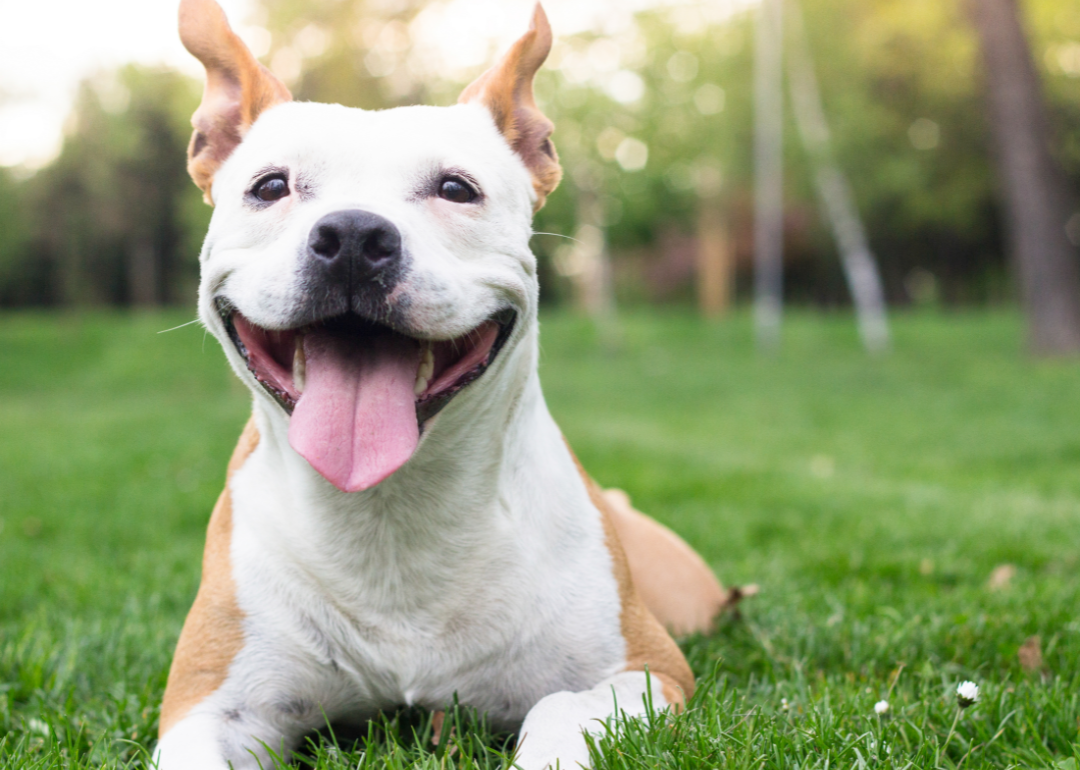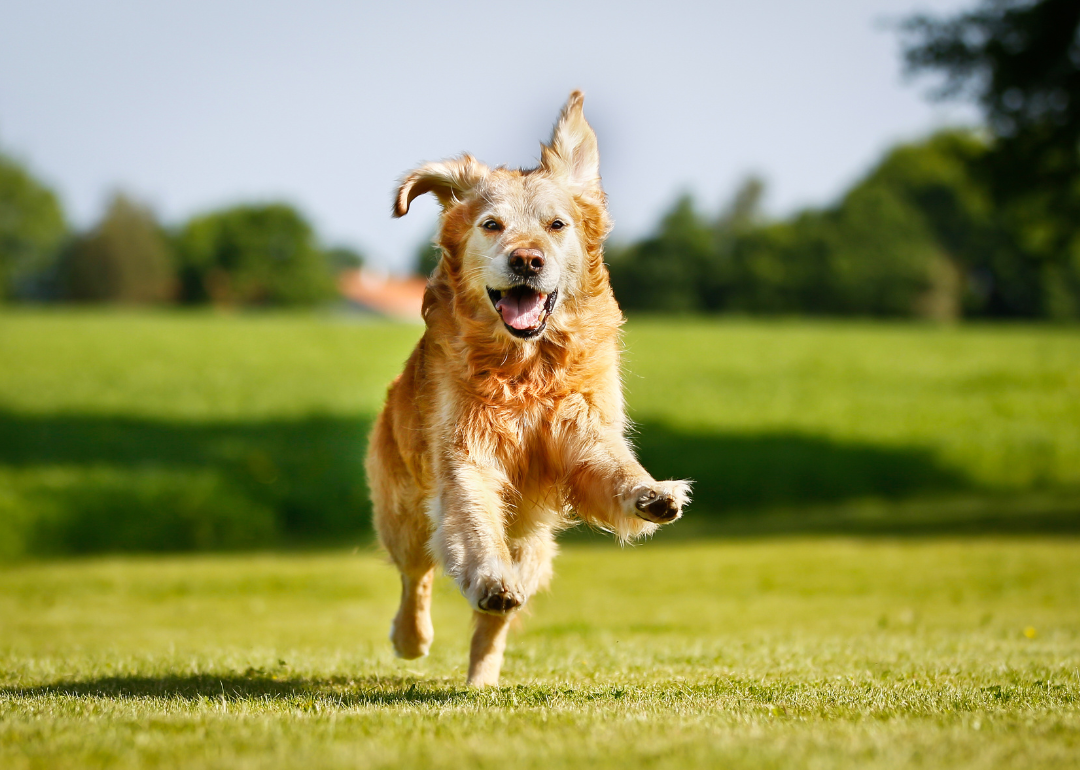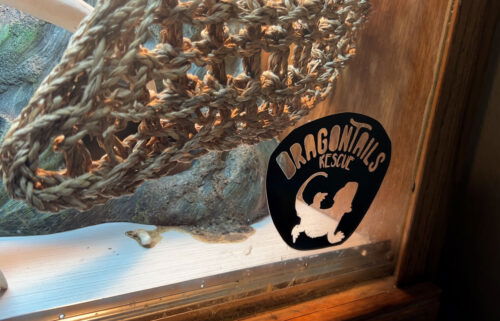How your dog's nutritional needs change as they age

Canva
How your dog’s nutritional needs change as they age
A happy dog lying in the grass.
Any puppy parent knows the struggle of preparing for a furry new addition. Most of the choices to make are pretty straightforward. Collars, leashes, tags, and toys are usually a matter of size, design, and color preference. But food? That’s another story. What you feed your dog from a young age can significantly affect their health down the line. You may have spent a substantial amount of time considering different puppy foods, but what happens when your dog ages out of that stage?
Determining how to meet your dog’s nutritional needs is a question any dog parent will continue to answer throughout their pet’s life. While the answers may change over the years, all dogs need five key elements in their diet: amino acids from protein, fatty acids and carbohydrates, minerals, vitamins, and water, the National Research Council of the National Academies of Sciences, Engineering, and Medicine said. However, the combination and amount of each depends on age, among many other factors.
To help you better understand your dog’s nutritional needs throughout the phases of their life, Ollie curated a guide using leading pet health resources, like the American Animal Hospital Association and the American Kennel Club, as well as consulting with veterinary experts. Whether you’re navigating what to feed your energetic puppy or wondering how to ensure your aging dog has the nutrients they need, here are some tips from the pros.
![]()

Canva
Puppies need more calories and protein than adult dogs
A beagle puppy eating.
For the first four weeks of their life, puppies’ diets typically consist entirely of their mother’s milk. After that initial month, it’s up to their new human parent to determine what to feed them.
A puppy expends a lot of energy, and during their speedy growth period (the first six months of their life), they need about twice as many calories per pound of body weight as adult dogs of the same breed, according to the National Research Council. The research group recommends 56 grams of protein, 21 grams of total fat, and 990 calories per day for the average 10- to 12-pound puppy up until they’re 33 pounds.
According to the American Society for the Prevention of Cruelty to Animals, a puppy’s food should contain 25 to 30% protein. “The focus for puppies should be on energy-dense, protein-rich diets to support their rapid growth phase,” said Dr. Michael Thompson, founder and leading veterinarian at Pets Food Safety.
Dr. Alex Crow of Pet Health Guru in the U.K. also notes that calcium and phosphorus are essential to puppies’ diets. “These two minerals are crucial for healthy bone growth. It’s important that these are present in optimal proportions in a puppy’s diet,” he said.
Puppies also eat more frequently than adult dogs. They need three to four meals per day for their first six months, at which point you can reduce the feeding frequency to two meals per day. Though the age of adulthood differs by breed, once they reach about a year old, a dog can start transitioning to adult food. That process should be done gradually by mixing a little adult dog food into their diet and increasing the proportion slightly day by day over five days.

Canva
Adult dogs’ dietary needs largely depend on activity level
A golden retriever running in the grass.
While puppies tend to have boundless energy, as your dog reaches young adulthood (around 3 to 4 years old, depending on the breed, according to the American Animal Hospital Association), their nutritional needs largely depend on their activity level.
“When it comes to adult dogs, the key is tailoring the diet to their lifestyle,” Dr. Cheri Honnas, veterinary advisor at Bone Voyage Rescue. “An active working dog needs more calories and a higher percentage of protein and fat than their lazier counterparts.”
Compared to the nearly 1,000 calories puppies need daily, a small 10-pound inactive dog only needs about 300 calories, and an active dog needs about 400. A medium-sized inactive dog (30 to 50 pounds) needs 675 to 990 calories, and an active one needs about 920 to 1,350.

Canva
Adult dogs can consume more fat than senior dogs, but levels should be monitored
A large brown dog with his face on the floor.
In terms of how they get those calories, the Association for American Feed Control Officials said adult dogs need at least 18% of their daily calories to come from protein; up to 50% carbohydrates, including 2.5 to 4.5% from fiber; and approximately 5.5% of their diet should come from fat.
“Adult dogs typically require a balanced diet that includes proteins, carbohydrates, and fats,” Crow said. “Adult dog foods are usually higher in fat than senior dog foods as younger dogs are better equipped to metabolize fat.”
This is also a time to watch your dog’s weight, which could negatively affect their joints and cause issues in their twilight years. “Maintaining a balanced diet is key for adult dogs, with the prevention of obesity being a major concern,” Thompson said. “If your dog’s energy levels are decreasing or they’re gaining weight, that could be an indication to reassess their diet.”

Canva
Senior dogs need fewer calories but more fiber and higher-quality protein.
An older brown dog with white on his face.
Dogs are considered senior when they are in the last 25% of their expected lifespan, according to the AAHA. However, when your dog reaches this stage depends on their breed and size. Studies have shown that larger dog breeds have shorter lifespans than smaller ones.
According to the American Veterinary Medical Association, toy and small breeds (those less than 20 pounds) are considered senior from between 8 and 11 years old. Medium-sized breeds (weighing 20 to 50 pounds) reach senior age between 8 and 10 years old. Large breeds (weighing 50 to 90 pounds) are of senior age from between 8 and 9 years old. And breeds weighing over 90 pounds are considered senior from between 6 and 7 years old.
Much like humans, dogs’ metabolisms tend to slow with age, which can lead to weight gain as well as lifestyle shifts. “Senior dogs often lead less active lifestyles than their younger counterparts, which can lead to weight gain,” Crow said. According to the AVMA, obesity in senior pets is linked to an increased risk of multiple health issues, including arthritis, difficulty breathing, diabetes, heart disease, and high blood pressure.
One key factor in managing your dog’s weight is monitoring calorie intake and ensuring they’re still getting high-quality protein. “Senior dogs require diets that are lower in calories but higher in digestible proteins,” Thompson notes. Older dogs require 25% fewer total calories than middle-aged adult dogs, according to the National Research Council.
It is, however, important to keep fiber in mind, which is something senior dogs need more of, according to Crow. “Higher fiber diets can help manage weight and promote gastrointestinal health in older dogs,” he said.

Canva
Nutrient levels of senior dogs must be monitored closely
Two people with a small white dog on a leash in a pet store.
Some dog food is made specifically for senior dogs, but each pet at this age may have very different needs. “A balanced and thoughtful approach to senior dog nutrition is essential,” Honnas said. “It’s not always just about following a fixed guideline; it’s about recognizing the individuality of each pet and responding accordingly.”
Generally, the key is providing the right mix of fat, protein, phosphorus, and sodium, the experts at VCA Animal Hospitals explain. Excessive fat could lead to weight gain; high-quality protein is key (a minimum of 25%, according to AKC’s Canine Health Foundation); excessive phosphorus could lead to kidney disease (which is common in older dogs); and too much sodium can contribute to kidney as well as heart disease.
Some professionals recommend adding supplements to your dog’s diet, like antioxidants and omega-3 fatty acids for various age-related conditions or nutrients like glucosamine for dogs with arthritis. But it’s best to speak to your provider about your dog’s specific needs.
“There are special diets for seniors to support joint health and manage chronic conditions,” Thompson said, but others may not need to make any switch. “Just because a dog becomes ‘senior,’ it doesn’t mean they must change their diet. Some dogs can stay on standard adult food all their life,” Crow said.
Story editing by Carren Jao. Copy editing by Kristen Wegrzyn. Photo selection by Lacy Kerrick.
This story originally appeared on Ollie and was produced and
distributed in partnership with Stacker Studio.





